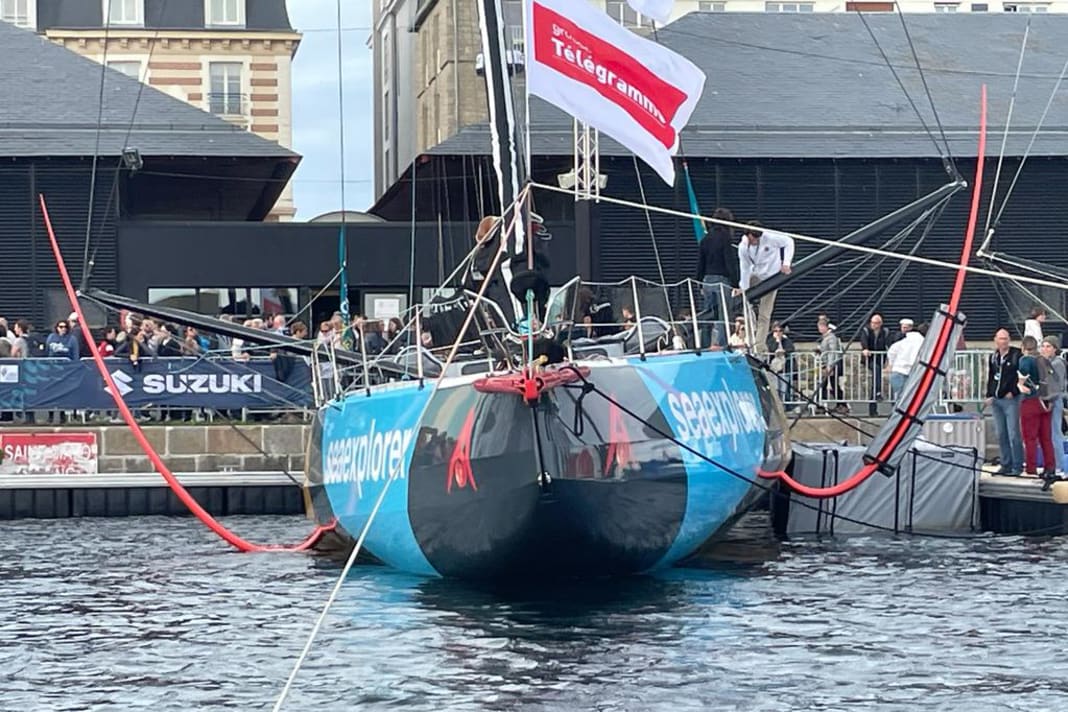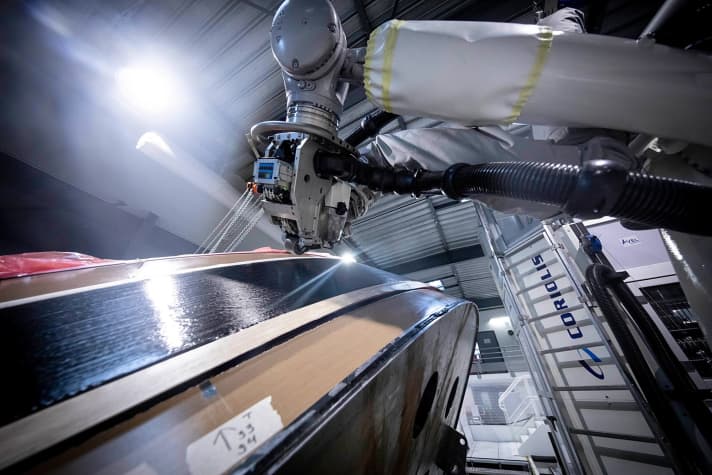
From a German perspective, it was the biggest shock in the lead-up to The Ocean Race: completely unexpectedly, the standard examination of the foils of "Malizia - Seaexplorer" revealed that they had suffered severe structural damage. As a result, the foils had to be replaced for the Ocean Race. As the foils cost at least 500,000 euros and take almost six months to build, this was a major setback for the team led by skipper Boris Herrmann.
But the team seems to have gained strength as a result. On site in Alicante, no team member harboured the slightest doubt before the start. On the contrary: the crew appeared more positive than ever, albeit somewhat surprised. Skipper Boris Herrmann was also confident one day before the start: "It's fun at the moment, and the team is delighted with the success of having turned this crisis situation around into a relatively confident, strong position in which we think: 'Maybe we're even better than before'." The crew agree that the new wings perform even better than the old ones in some conditions. For example, the flight attitude is now much more stable, with at least the same top speed, although the foils are only reached a little later.
The differences
The team initially kept quiet about where they came from and how close they were to the original "Malizia - Seaexplorer" foils. However, it was clear from the start: They differ significantly in both length and shape from the VPLP attachments that were fitted until December.
The original foils have long tips that point only slightly upwards from the so-called elbow - the angle after the shaft mounted in the hull. They therefore correspond to the current design concept of the class. In contrast, the wings of "Malizia - Seaexplorer" that have now been fitted are rounded in a crescent shape and protrude much less laterally into the water. In the maximum uphaul position, they protrude a handspan further out of the hull than would be desirable and optimal for light wind conditions.
The rounder profile promises significantly greater stability due to its shape and is better suited to rough courses. It also minimises the risk of the foils being completely submerged in the water (for example when surfing/diving into a wave) and thus pulling the boat even further into the water instead of lifting it out - as happened in Kevin Escoffier's accident at the Vendée Globe 2020, which is why his Imoca broke and subsequently sank. Although "Malizia - Seaexplorer " may be able to withstand this reversed load better than Ecoffier's sunken "PRB" due to its robust construction, the foils and their bearings are not designed for this.
Foils are not from Sam Davies




Due to the close visual proximity, speculation that these were the foils from Sam Davies' "Initiatives Cœur 4" was not long in coming. And they are indeed on the right track. The design is exactly the same, but it is not Davies' foils. Instead, they were intended for a sister ship that has not yet been completed (the skipper and boat will be made public during boot Düsseldorf) and are therefore completely new.
"Initiatives Cœur 4" is considered lighter in comparison to Boris Herrmann's deliberately solidly designed and built boat - a decisive factor in the choice of profiles. In addition, the two Imocas and therefore also the foils were created by two different designers. Although this is astonishing, there was no alternative, as there is simply no current Imoca from the same design studio. While "Malizia - Seaexplorer" was created by VPLP according to Herrmann's special ideas, Sam Davies' boat is a design by Sam Manuard, more precisely a modified replica of "Bureau Vallée" (ex. "l'Occitane").
How Team Malizia got the new foils
According to team manager Holly Cova, they were already prepared for this emergency. They had taken precautions and looked for foils that might be suitable. Three variants remained, from which one has now been selected. In terms of price, it will definitely not have been a bargain; a member of the shore team asked about it in the Race Village was unable to give any precise details, but it was "a lot of zeros".
Causes of structural damage still unclear

The old foils from "Malizia - Seaexplorer" are currently being analysed in France. They were uncharted technical territory as they were laminated by robots using an innovative manufacturing process. Previously, the profiles, which had to be laminated from hundreds of layers of carbon fibre and repeatedly baked in an autoclave, were made by hand. The new technology was actually intended to produce more homogeneous, higher-quality laminates.
It is not yet known whether the damage is due to this or a consequence of the defect in the upper foil guide, which threw Herrmann back during the Route du Rhum. The metal bolts on the head had broken and the side plates holding the foil had bent. The team had replaced the metal parts before the return passage from Guadeloupe to Alicante and had assumed that the problem had been solved. During the transfer, however, the boat had sailed at high speeds of over 30 knots for the first time in some very rough seas.
"Malizia - Seaexplorer" ahead of lighter "Biotherm"
The aforementioned high weight of the "Malizia - Seaexplorer" is viewed particularly critically, also in relation to the new foils. This could also be the cause, as never before has a foiling Imoca been built like this one. While the others were built as a sandwich, Herrmann opted for a hull made of solid laminate, which is supposed to be more resistant to the sometimes hard blows. "Biotherm" skipper Paul Meilhat commented rather smilingly on the weight: "If you look at 'Malizia', you would have to build two 'Biotherms' to get one Malizia."
So far, however, Malizia has been able to keep up well with the field and is currently also ahead of the lighter "Biotherm". Boris Herrmann and his team firmly believe that the new profiles will also prove themselves in the long term and therefore see no need to check them again with ultrasound at one of the upcoming stops of The Ocean Race.
At this point, you will find external content that complements the article. You can display and hide it with a click.

